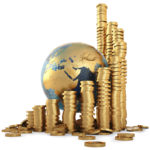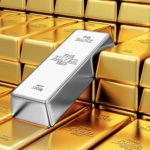Yellen surprises hedge funds who cut gold bets before rally
(March 21, 2017 - by Luzi Ann Javier)
Fed outlook sparks biggest two-day gold gain since November.
Janet Yellen’s soothing words on the pace of US interest rate hikes were a day late for hedge funds losing faith in the metal.
Money managers cut their bullish bets on bullion by the most since 2015 in the week ended March 14. The next day, Federal Reserve chair Yellen reiterated that monetary policy will remain accommodative for “some time,” easing market fears that there might be more than three rate hikes this year. Her words sparked the biggest gold rally since November.
Gold, which climbed through the first two months of the year, had foundered in March as the prospect of higher borrowing costs curbed the appeal of non-interest-bearing assets. Yellen’s remarks came as the Bank of Japan maintains its unprecedented monetary easing program and the Bank of England holds its benchmark rate at a record low, helping to keep yields on trillions of dollars’ worth of debt below zero.
“The fact that we still have simulative measures, the fact that we still have negative rates out there — that generates uncertainty in people’s minds,” said George Milling-Stanley, the head of gold strategy at State Street Global Advisors, which oversees $2.47 trillion. “There’s still an awful lot of things out there that are supportive of gold in the short- to long-term.”
The funds reduced their gold net-long position, or the difference between bets on a price increase and wagers on a decline, by 47% to 49 835 futures and options contracts in the week ended March 14, according to US Commodity Futures Trading Commission data released three days later. That was the biggest decline since December 2015.
As traders awaited the Fed meeting, gold futures in New York dropped in the first part of last week. Yellen’s statement on March 15 then reversed those losses, sending the metal up 2.5% to $1 230.20 an ounce at the close on March 17, the biggest two-day gain since November 2. Prices added 0.2% on Monday to $1 232.80.
Yields on more than $8 trillion in government and corporate debt in the Bloomberg Barclays Global Aggregate Index of investment-grade bonds have fallen below zero, meaning they’re certain to lose money if held to maturity. While the Fed funds rate rose by a quarter point to 0.75% to 1% last week, that upper-band of the range is still well below the average of 5.18% over the past four decades.
The negative yields give an advantage to gold, which some investors consider a store of value and a hedge against inflation.
There are other tailwinds supporting bullion. Standard Chartered Analyst Suki Cooper said political uncertainties from the French elections to the UK’s formal exit from the European Union will bolster haven demand. Price dips toward $1 200 are “attractive entry levels,” she said in a report March 16. A pick up in seasonal demand from India also limits the downside risk in the near-term, Cooper said.
India Demand
Gold imports by India, which competes with China for the role of world’s biggest consumer, jumped 175% to 96.4 metric tons in February from a year earlier, according to a person familiar with provisional data from the finance ministry who asked not to be identified as the data aren’t public. Jewelers boosted stockpiles before the festival and wedding period that starts next month.
The precious metal’s rebound has also been driven in part by risks to global growth, the lack of clarity on US tax reform and “persistent doubts” about the US infrastructure plan by President Donald Trump, Morgan Stanley analysts including Tom Price wrote in a note March 13. Still, they said they remain “long-term bears because of stable global growth, and “pro-active inflation management.”
Investors also may be underestimating how eventual monetary tightening could hurt the appeal of precious metals, said Chad Morganlander, a money manager at Stifel, Nicolaus & Co in Florham Park, New Jersey, where he helps oversee more than $200 billion. Fed policy makers have penciled in two more quarter-point rate increases this year and three in 2018.
“The broader trend is still negative” for gold, said Rob Haworth, a Seattle-based senior investment strategist at US Bank Wealth Management, which oversees $138 billion. “It’s going to be hard to sustain the gains with economic growth still pretty solid, the Fed looking to raise rates and some prospect for fiscal policy support before year end.”






